iButton disassembly
The content on this web page was last updated in 2005, and is being maintained for archival purposes.
iButton disassembly
This page shows some photos of two dismantled Dallas iButtons, a DS1922L (Thermochron) temperature logger and a DS1923 (Hygrochron) temperature/humidity logger. They were rendered unusable due to a bug in the humalog example application provided by Dallas. Removing the battery would take them out of the error state and I was curious so I decided to open them up.
Photos
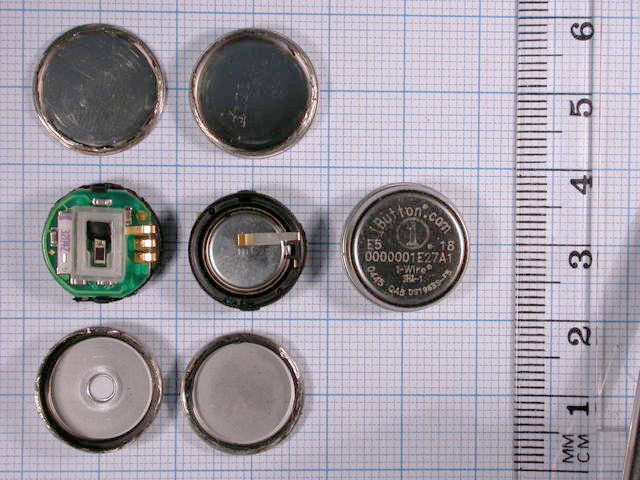
iButton parts, from left to right, top to bottom: DS1923 can
(bottom), DS1922L can (bottom), DS1923 board+battery (top view),
DS1922L board+battery (bottom view), intact DS1963S
SHA iButton (top view), DS1923 can (top), DS1922L can (top)
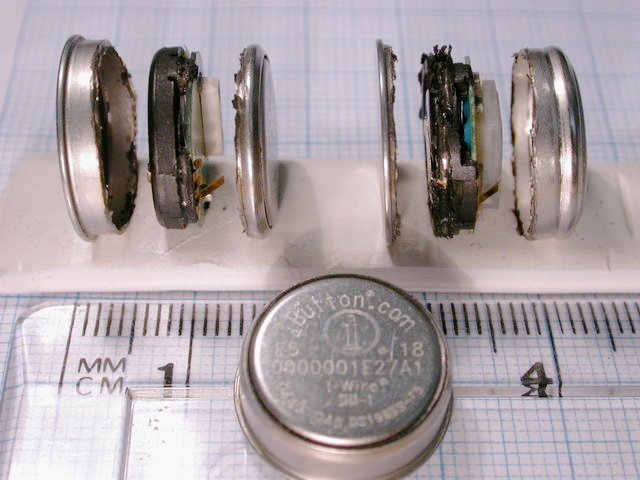
iButton parts, from left to
right, back to front: DS1922L can (bottom), DS1922L board+battery,
DS1922L can (top), DS1923 can (bottom), DS1923 board+battery, DS1923
can (top), intact DS1963S
SHA iButton (top view)
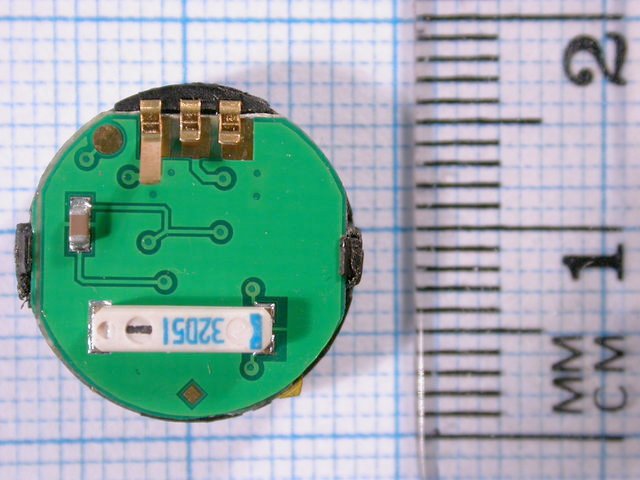
DS1922L+battery top view. In-use
contacts at top of image are (left to right): 1-Wire IO, battery +ve,
1-Wire GND/battery -ve. The purpose of the circular pad is unknown

DS1923+battery top view. In-use
contacts at top of image are (left to right): 1-Wire IO, battery +ve,
1-Wire GND/battery -ve. The purpose of the circular pad is unknown
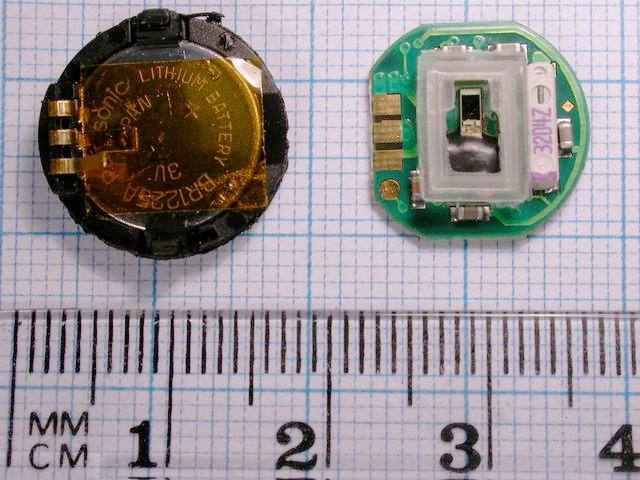
Left to right:
iButton battery pack (top view), DS1923 circuit board (top
view). Contacts are (top to bottom): 1-Wire GND/battery -ve, battery
+ve, 1-Wire IO. The purpose of the circular pad on the circuit board
is unknown
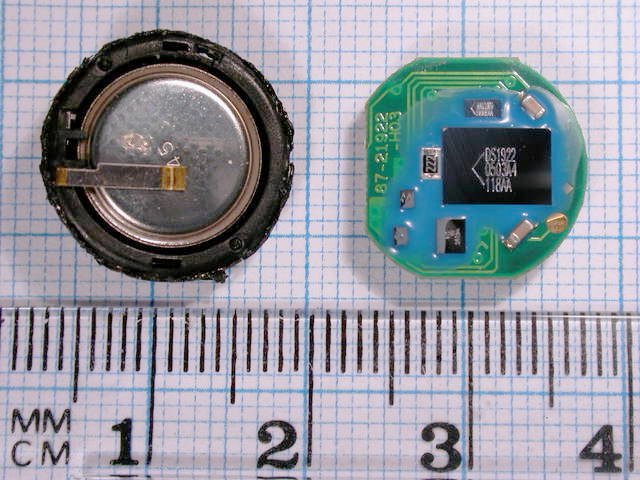
Left to right:
iButton battery pack (bottom view), DS1923 circuit board (bottom
view). The metal strip on the battery pack connects together the -ve
contact of the battery and the 1-Wire GND connector of the can through
to the associated pad on the circuit board
Disassembly procedure
The iButtons were opened using a 15 V Minicraft MB150 drill with cutting disc attachment. Because this was hand held, the cutting is irregular and the iButton battery pack has been damaged. Much better results would be obtained if a depth controlled cutting tool was used. Nevertheless, both iButtons remain operational.
Each iButton was cut in a different place, to experiment with the best position. The DS1922L was cut approximately 2 mm from the top contact. This caused minor damage to the battery pack standoffs, but avoided damage to the circuit board, although this was very close. The DS1933 was cut approximately 1 mm from the bottom contact. This caused more major damage to the battery pack, but not to the battery, which was protected by a 1 mm plastic case. This cut was well away from the circuit board, so reducing the risk of damage to it.
If you do use this information, you do so at your own risk. Remember to take appropriate safety precautions, especially make sure you wear good eye protection.
